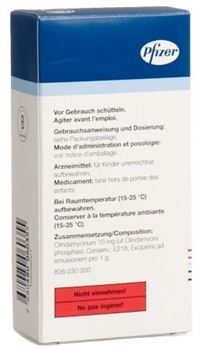The landscape of medtech investments is undergoing a significant transformation.
The recent tariff measures implemented by the Trump administration have shaken global markets.
These reciprocal tariffs could redefine supply chains and investment strategies.
The increase in tariffs directly impacts the costs of imported components such as sensors or chips, making American production more expensive. Medtech companies struggle to balance quality and costs, hindering their ability to innovate and grow. This economic uncertainty could discourage investors from funding new startups or increasing their current investments in the sector.

Understanding the impact of American customs tariffs on investments in the medical technology sector
The American customs tariffs introduced by President Trump on April 2, 2025, have profoundly changed the landscape of investments in the medical technology sector. By imposing a base reciprocal tariff of 10%, with higher rates for certain countries like Cambodia (49%) and Vietnam (46%), the United States sought to protect its industry while responding to international trade practices. A week later, these measures were adjusted with a 90-day delay on certain taxes, but the tariff on China was brutally increased to 125%. These decisions have had major repercussions on the medtech sector, influencing both production costs and the investment strategies of companies.
How tariffs increase production costs in the medtech sector
The tariffs imposed by the United States result in an increase in costs for essential imported components such as sensors, chips, plastics, and metals. These materials are often purchased abroad, making medical technology products more expensive to manufacture in the United States. For example, the maintained 10% tariffs for most US trading partners mean that medtech companies must absorb higher costs or pass these increases onto final prices. This reduces profit margins, slows the growth of startups, and complicates the scaling of established companies. As a result, many American medtech companies may hesitate to invest further in domestic production, preferring to maintain global supply chains to minimize costs.
Disruptions in global supply chains
The customs tariffs are not just a simple increase in production costs; they also introduce uncertainty and delays in global supply chains. International suppliers, faced with higher tariffs, may choose to relocate their production to countries not subject to these taxes, complicating logistics for American companies. Moreover, the potential for retaliatory tariffs from other nations or trading blocs, such as China or the European Union, creates a climate of instability. This volatility discourages investors who seek more predictable environments to place their capital. As a result, medtech companies may experience disruptions in production, increasing time to market and limiting their ability to respond quickly to health needs.
The repercussions on investments in the medtech sector in the United States
Investments in the American medtech sector have historically been robust, with $290 billion attracted in 2023 according to GlobalData’s Deals database. However, the new tariffs introduced have sown doubt among investors, causing a slowdown in capital flows to this sector. The political uncertainty and the constant threat of new tariffs make financiers hesitant to commit, delaying funding for innovative projects. Furthermore, retaliatory tariffs also affect American exports of medical devices, reducing potential revenues for companies and limiting their attractiveness to foreign investors. This decrease in capital flows could weaken the dominant position of the United States in the global medical technology market, negatively impacting companies’ capacity to innovate and grow.
Opportunities despite the challenges posed by tariffs
Despite the many challenges, American customs tariffs can also create opportunities for the medtech sector. By specifically targeting devices manufactured abroad, these measures can encourage domestic production. This could stimulate investment in manufacturing facilities in the United States, thus attracting venture capital specialized in domestic alternatives. Additionally, there is potential for complementary government incentives, such as tax credits, grants, or funding for research and development, aimed at supporting companies that realign with reshoring efforts. These initiatives can offer opportunities for startups in the American medtech sector, fostering innovation and strengthening the resilience of local supply chains. For more information on the medtech sector’s response to tariffs, see The actions of the pharmaceutical and medtech sectors bounce back after Trump puts most tariffs on hold.
Strategies of medtech companies to mitigate tariff-related risks
In the face of rising customs tariffs, medtech companies are adopting various strategies to mitigate risks and ensure their financial security. Some companies are looking to diversify their supply sources by reducing their dependence on a single country or region, which can lessen the impact of high tariffs. Others are investing in innovative technologies to cut production costs or improve supply chain efficiency. Additionally, medtech industry groups are mobilizing to obtain tariff exemptions, aiming to alleviate the tax burden imposed by the US government. This industry solidarity is crucial for creating a united front against unfavorable trade policies. For more on the medtech industry’s efforts to secure tariff exemptions, visit Medtech industry groups unite to secure tariff exemption.
The impact of tariffs on startups and innovation in medtech
Startups in the medtech sector are particularly vulnerable to tariff increases, as they often have limited resources to absorb additional costs and quickly adjust their business models. Investment funds, attracted by the industry’s offerings in 2024, may be more cautious given the current economic uncertainties. This caution can slow the flow of capital to young companies, limiting their ability to innovate and grow. However, some startups see an opportunity in adapting to the new market conditions by focusing on local manufacturing and developing products tailored to the specific needs of the American market. By capitalizing on these adjustments, new medtech companies can not only survive but also thrive in a business environment redefined by customs tariffs.
Government initiatives to support the medtech sector in the face of tariffs
In response to the challenges posed by customs tariffs, the US government might consider support measures for the medtech sector. These initiatives could include grants, tax credits for local production, or research and development funds aimed at encouraging domestic innovation. Such measures would be essential to offset the rising costs associated with tariffs and stimulate investment in American manufacturing. Furthermore, the government could collaborate with industry groups and universities to develop training programs aimed at strengthening the technical skills necessary for advanced medical technology production. These initiatives would not only support existing companies, but also encourage the next generation of innovators in the medtech sector. For more details on the actions taken by American manufacturers in response to tariff risks, see American Generic Drug Manufacturers and the Supply Chain Facing the Risks of Tariffs on Imports from China.
Future prospects for the American medtech sector
As customs tariffs evolve, the American medtech sector finds itself at a strategic crossroads. The immediate impact of tariffs may be seen as an obstacle, but it also presents an opportunity to reevaluate and reinvent business strategies. The emphasis on local production and diversification of supply chains can enhance the sector’s resilience to future economic shocks. Additionally, ongoing innovation and technological development will remain essential drivers of growth, even in a complex tariff environment. Ultimately, the ability of medtech companies to adapt and seize new investment opportunities will determine their long-term success. The medtech sector, bolstered by its historical leadership and constant innovation, is well-positioned to navigate these turbulent waters and emerge stronger and more competitive on the global stage.
Case studies: Successful responses to customs tariffs
Several American medtech companies have already demonstrated their ability to effectively adapt to the challenges posed by customs tariffs. For example, a pioneering company in manufacturing medical devices decided to relocate part of its production to the United States, thereby reducing its reliance on costly imports. This move not only helped reduce tariff-related costs but also strengthened its local presence and created jobs. Another company innovated by developing advanced technologies that use fewer imported materials, thus optimizing its supply chain and decreasing its exposure to tariff increases. These case studies illustrate how adaptability and innovation can transform challenges into opportunities, ensuring the sustainability and growth of American medtech companies despite a complex tariff environment.













